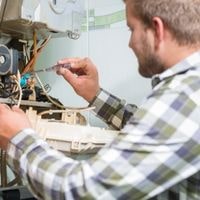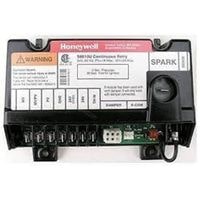Honeywell Furnace Troubleshooting. A Honeywell furnace is an appliance in your home that not only creates heat but also distributes this hot air around the entire home. Essentially, the job of a Honeywell furnace is to produce heat and distribute it all throughout.
Its unique job is to provide warmth throughout a house by generating as much heat as possible. For example, it may take some drafts and manufacturing of electricity to turn on lights or operate an electrical device of some kind.
In a similar fashion, a Honeywell furnace converts combustible fuel like natural gas into usable waste energy in order to create excess amounts of heat for heating systems.
It uses hot air for ventilation via vents and ducts so the goal is to keep your home at an ideal temperature regardless of what time of the year it may be.
Honeywell Furnace Troubleshooting
To troubleshoot Honeywell furnace problems, we discuss the following.
Honeywell Furnace is loud or noisy
When a blower motor is overheating, the bearings wear out and cause the motor to become noisy. In most cases, it’s possible for a licensed HVAC technician to lubricate the blower motor try contacting a professional repairman to attempt this first.
If lubricating the motor does not fix the problem or if your furnace motor can’t be lubricated, you’ll need to replace your blower motor.
Blower wheels are commonly found in furnaces and other gas appliances. They are wedged-shaped fans that keep your machine working efficiently by distributing cool or warm air directly to each area of your home where it is needed the most.
Blower wheels sometimes develop problems. The fan can sometimes become loose on its shaft, causing the blades to wiggle inconveniently as they spin.
If you come across this issue, check all of the attached screws to see if any of them have become detached from their proper positions. It is imperative that you reattach it properly and tighten down all others so that they remain solidly intact while blading out the cold air evenly throughout your house.
Honeywell Furnace does not heat
The flame sensor detects when a flame is present on the burner. If the flame sensor does not detect a flame, the control board will turn off voltage to the gas valve (to prevent the furnace from heating). Sometimes, if you have an old or dirty flame sensor, it might fail to detect the presence of a flame and the furnace won’t turn on.
Try cleaning your old or faulty flame sensor using a fine abrasive pad. If replacing your flame sensor didn’t help, you may need to call for service by a heating professional.
The gas valve on the furnace is responsible for regulating how much gas can flow into the burner, which controls the level of heat. It’s important to check this valve because if it’s not working correctly, the furnace will be unable to produce enough heat to keep your home warm throughout the winter months.
To make sure that a faulty gas valve is not the cause of your furnace’s inability to generate adequate heat, place a multimeter in between the two terminals on the gas control box.
If you observe no signs of continuity, contact a certified technician immediately because this indicates that there may be an issue with a component inside of your furnace’s gas control box, and you are running a risk of facing dangerous consequences if not addressed as soon as possible.
Honeywell Furnace blower runs continuously
A wall thermostat controls the furnace’s power supply through an electrical contact. If the contact that controls the blower motor sticks closed, the continuous voltage will be sent to the motor, causing it to run continuously.
Using a multimeter, test the thermostat for continuity while it is off to determine if it is defective. In other positions, the wall thermostat shows continuity between one pair of terminals, but no continuity between another pair.
Honeywell furnace starts then shuts off
The pressure switch is used to determine if the furnace has enough oxygen flow to work. If the pressure switch isn’t working, it might not close when the proper airflow is present and therefore cause a problem with igniting.
If the furnace doesn’t ignite, the furnace will be turned off. To test if an issue with the pressure switch is causing your issues, use a multimeter to test for continuity in the switch. If it does not have continuity you’ll need to replace it with a new pressure switch.
The flame sensor is one of the most critical components in your furnace. The flame sensor monitors the burner to detect whether or not a flame is present.
If there is no flame, the control board will shut off voltage to prevent the furnace from heating. If you find out that your flame sensor is faulty, you can clean it with an abrasive pad which will help clear any debris clogging up its receptors so it may better detect a fire.
Sometimes if the flame sensor is dirty, it fails to pick up that there’s a fire going on – so make sure you keep yours clean at all times.
Honeywell Furnace Troubleshooting
Related Guides
